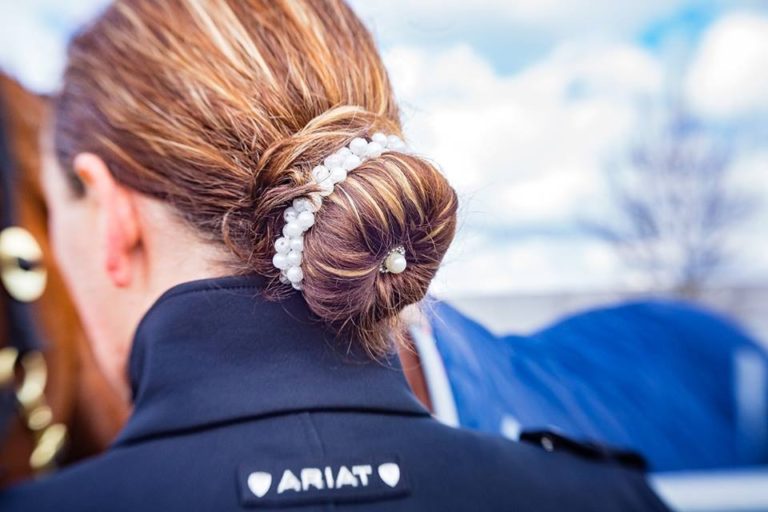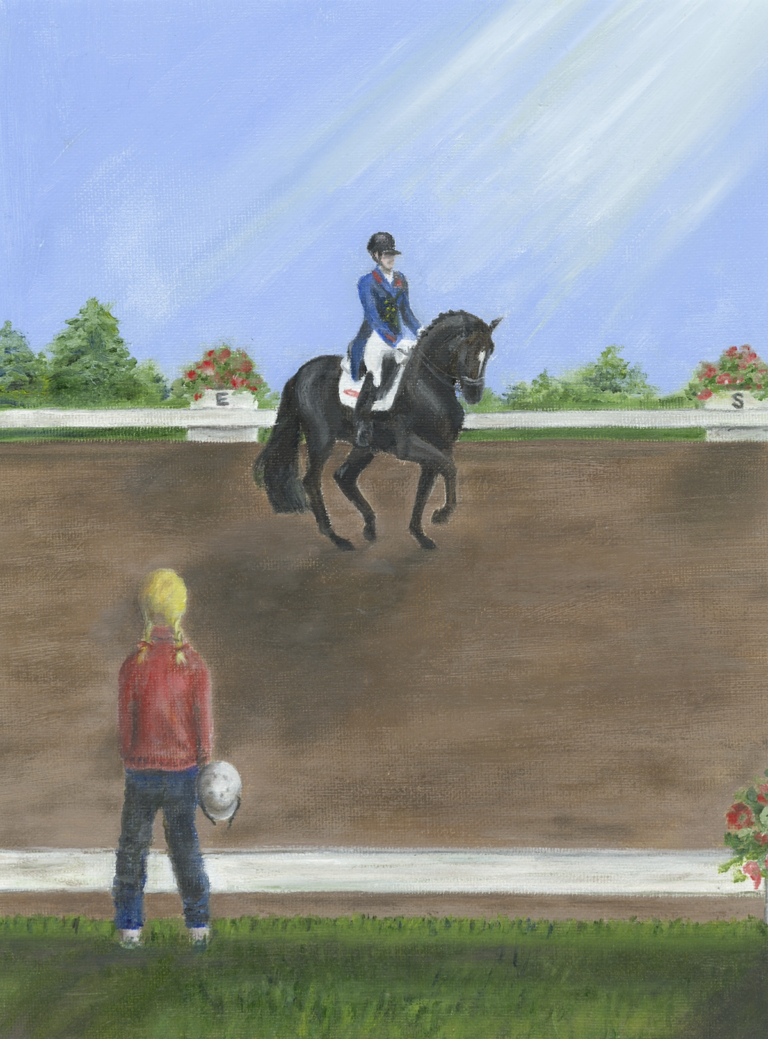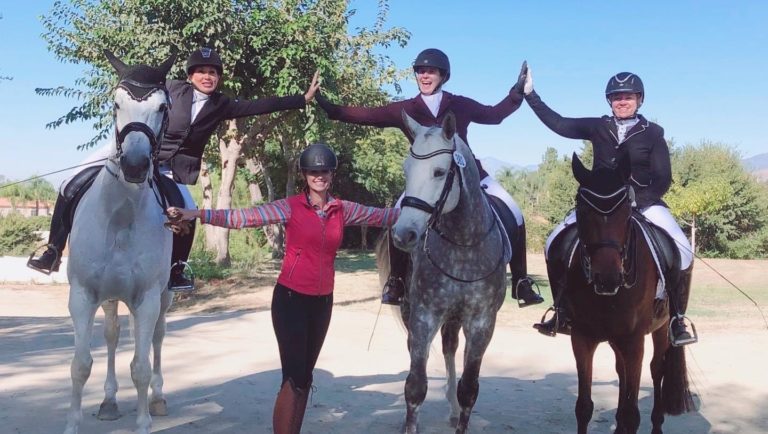In her book, When Two Spines Align: Dressage Dynamics, trainer, author and Dressage Today’s technical editor Beth Baumert helps readers discover how to use “positive tension” and “powerlines” to become balanced and effective in the saddle. Use of positive tension and powerlines allows the rider to be strong but still soft. It is the easy way to be strong. This excerpted chapter of the book is from Part I called “How Riders Work.” Part II of the book, “How Horses Work,” describes how riders can help their horses overcome coordination challenges. First, as a four-legged creature, the horse is naturally inclined to do too much with his front end and not enough with his hind. Second, the horse is naturally crooked, so the rider needs to help him become straight and aligned. Part III, “How Two Spines Align in Balance,” gives the rider specific direction on how to create balance and harmony at that place where two spines meet. This excerpt is used with permission from Trafalgar Square Books. The book and the DVD of Part I are available through HorseBooksEtc.com, (800) 952-5813.

To read more from “When Two Spines Align: Dressage Dynamics” please see “Harness Positive Tension to Improve Your Riding.” on DressageToday.com.
EXERCISES
Exercise 1: Find Your Vertical Powerline
Purpose: To give you a powerful vertical presence that uses gravity to make you supple and strong.
Directions: To find and strengthen your Vertical Powerline, imagine yourself in a riding stance in a small boat, facing the bow (fig. 2.7). Your feet are grounded as if you were riding. Now, turn on the imaginary engine and start to go forward in your boat. The sea may be slightly rolling and you’ll need to go with the motion. Your body should automatically assume a tall stature from your feet to the crown of your head. This Vertical Powerline is strong, but also supple. Your hips, knees and ankles move in a way that keeps you balanced.
This is the way to ride a horse—with a supple, strong Vertical Powerline. This strength enables you to be coordinated and strong enough to sit in balance no matter what the horse is doing.
Exercise 2: Find Your Connecting Powerline
Purpose: Made famous by Finnish Olympic medalist Kyra Kyrklund, there is probably no better way of getting the right feeling for the connection.
Step 1: Stand at a halt. Ask a friend or your trainer to push the back of your upper arm forward toward the bit.
Step 2: Resist the push very slightly so your arm feels elastic (fig. 2.8). This causes you to engage muscles in your upper back in the area of your shoulder blades (that lie flat against your back) and the back of your armpits. These are the muscles that create a connection from the elbow to the bit—a connection in which the hand can influence the horse without pulling back. It feels like the energy flows from your elbow to the bit without backward influence. In this situation, you can stop or slow the energy by fixing your hands or closing your fist—not by pulling back.
Exercise 3: Find Your Spiraling Powerline
Purpose: To help you stay controlled as you turn through corners and bent figures. In the process, it will keep your horse compact and controlled, too.
Directions: Imagine you are standing in the same small boat as in Exercise 1. Now you want to steer it to the right, so you spiral (like an old-fashioned barber pole) to the right, which puts a little more weight toward your desired direction of travel—in the right foot. This is exactly what you do in the saddle, too. When you spiral to the right, more weight automatically transfers to your right inside stirrup, and your right inside seat bone becomes just a tad heavier. Your horse steps under your weight and turns. Sit straight on both seat bones so you don’t abandon your horse on the outside (left).
When you imagine being in your small boat, it’s easy to keep your outside foot down because you wouldn’t last long if you lifted it!
Exercise 4: Find Your Visual Powerline
Purpose: To give you a sense for how influential your line of vision is to the balance of your horse. Try this at the beginning of your ride:
Step 1: Sit with the floor of your seat down, the crown of your head high and your line of sight horizontal to the ground.
At a walk, go around your entire riding space in this posture, once to the left and once to the right.
Step 2: In this same posture, pick up the trot and go around once to the left and once to the right.
Step 3: Now do the same in canter.
This exercise for your Visual Powerline only takes a few minutes, but self-discipline in the beginning of your ride can improve the balance for your whole ride.
Exercise 5: Strengthen Your Core with the “Bridge”
Purpose: To strengthen the core muscles that coordinate your seat and your powerlines.
In this exercise, your body will arc into the shape of a bridge.
Step 1: Lie flat on your back with your knees bent, feet placed the width of your shoulders apart and arms at your sides, palms down.
Step 2: Push through your heels and lift your hips to a height that aligns them with your knees and shoulders (fig. 2.9).
Hold to the count of three and lower them to the ground. Repeat.
Increase the duration of the pose and the repetitions as you feel comfortable.
Exercise 6: Strengthen Your Core with Push-Ups from the Forearms
Purpose: To strengthen your core without stressing your wrists as normal push-ups do.
Step 1: Lie on your stomach. Place your elbows directly under your shoulders and clasp your hands (fig. 2.10).
Step 2: Lift your body in alignment and hold for a count of five. Lower yourself and repeat. Increase the duration of the pose and the repetitions as you feel comfortable.
Exercise 7: Keep Your Powerlines Supple
Purpose: To enable your movement to be subtle and soft.
Directions: When you ride, minimize your gross (visible) motor movement.
To do this, you should:
• Concentrate on the small spaces within the joints of your fingers.
• Feel the spaces between each of
your ribs.
• Concentrate on the small places within your body, and know that those are the places that make
you supple.











